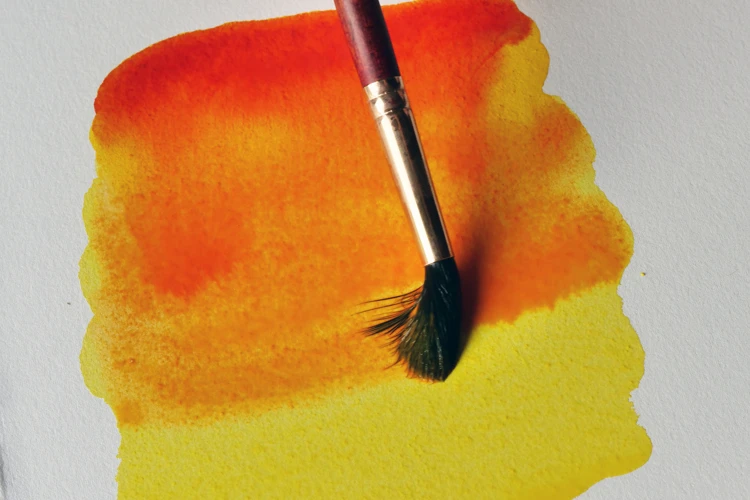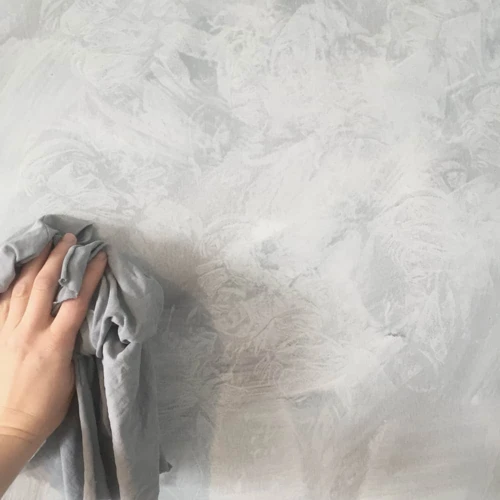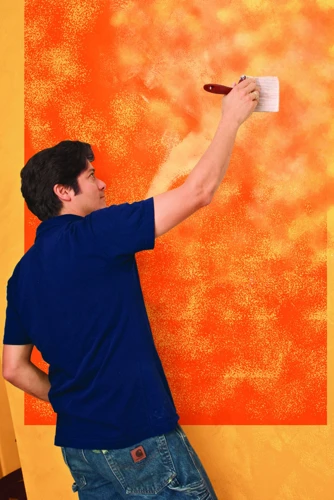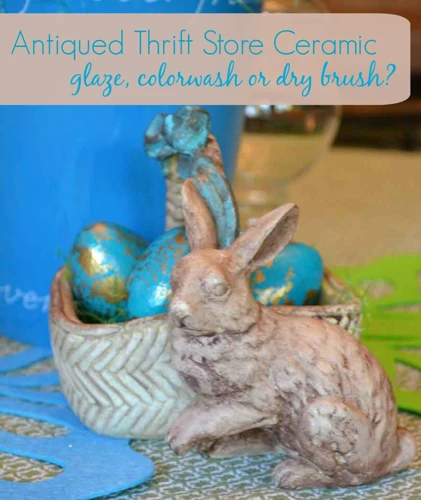Have you ever stared at your walls and wished that there was something more you could do to enhance their appearance? Faux finishes can add depth, texture, and character to any room, but with so many techniques available, it can be overwhelming to know where to start. Two popular options are glazing and paint washes, but what exactly are they, and how do they differ? In this article, we’ll explore the world of glazing and paint washes for faux finishes, and help you determine which one is best for your project. So, let’s dive in and discover the secrets of these transformative techniques.
What is Glazing?
If you’re looking for a way to add depth and dimension to your walls or furniture, glazing might be the perfect technique for you. Glazing involves applying a thin layer of transparent or semi-transparent tinted color over a base coat to create a multidimensional effect. This technique is often used in faux finishes to replicate the look of materials such as marble, wood, or concrete. If you’re a beginner, using glazes can be intimidating but with the right guidance and practice, you can create stunning finishes. If you’re interested in other faux finish techniques, you can check out our comprehensive guide on Top 5 Faux Finish Techniques.
How to Use Glazing?
Glazing is a painting technique used in faux finish that involves applying a thin layer of translucent paint called glaze over a base coat to create a multi-dimensional color effect. Here are the steps you should follow when using glazes for your faux finish project:
- Prepare your surface: Like any other painting project, you should make sure your surface is clean, dry, and smooth. If you’re applying glaze over a new surface, prime the surface first with an appropriate primer.
- Apply the base coat: Apply a base coat of paint that is similar in color to the final glaze you want to use. Allow the base coat to dry completely.
- Mix the glaze: Mix a small amount of glaze with a paint color of your choice. If you’re not sure which color to use for your glaze, try using a color wheel to help you decide. You can also experiment with different colors to create unique effects like marbling or wood grain.
- Apply the glaze: Dip a paintbrush into the glaze mixture and apply it over the base coat in a thin layer. You can apply the glaze using a variety of techniques like brushing, sponging, or rag rolling to create different finishes.
- Blend and finish: Use a dry brush or soft cloth to blend the glaze into the base coat. Make sure to blend the glaze uniformly to avoid streaks or blotches. Allow the glaze to dry completely before applying a sealer coat.
By following these steps, you can create a glazing effect that adds depth and interest to your faux finish. Experiment with different colors and techniques to achieve the desired effects. You can also check out our other articles on faux finish techniques like marble finish paint, wood grain effect paint, art venetian plastering beginner’s guide, distressed look furniture paint, faux finish modern industrial, and using stencils for faux finish designs for more ideas and inspiration.
What is a Paint Wash?
Creating a faux finish can involve using various techniques and materials to achieve the desired effect. One such technique is a paint wash, which can be a great way to add depth and texture to a surface. A paint wash is essentially a thinned-down version of paint that is applied over a base coat to create a translucent layer. This layer can be used to mimic the look of aged or weathered surfaces, add a subtle tint, or provide a base for further glazing or stenciling. Let’s take a closer look at how to use paint washes in your faux finish projects.
How to Use Paint Washes?
Paint washes are a great way to add subtle color to a surface without completely covering its existing finish. Here is how you can use paint washes to achieve your desired effect:
| Step | Description |
|---|---|
| 1 | Clean the surface you want to paint. |
| 2 | Choose the paint color you want to use. |
| 3 | Mix the paint color with water to create your desired level of transparency. The more water you add, the more transparent the paint will be. |
| 4 | Apply the paint wash to your surface using a paintbrush, roller, or spray gun. Start in small areas and work your way across the surface. Use long, even strokes to ensure an even coverage. |
| 5 | Allow the paint to dry completely before adding another layer. If you want a darker color, wait for the first layer to dry and apply another layer of paint wash. |
| 6 | Finish the surface with a clear coat to protect the finish and to further enhance the color of the paint wash. |
Keep in mind that the amount of water you add to the paint will affect the color and translucency of your paint wash. Experiment with different ratios to determine the level of coverage you want. Paint washes are a great way to add depth and dimension to your surfaces, especially if you want to create a subtle, antique or weathered look.
The Difference between Glazing and Paint Washes
If you’re interested in achieving unique textures and finishes on your walls, you’ve probably come across the terms “glazing” and “paint washes”. While both techniques involve thinning out paint with a medium to create translucent layers, they differ in their ingredients, application method, and color matching. Let’s explore the key differences between glazing and paint washes to help you decide which technique is best for your project.
Ingredients
Both glazing and paint washes are surface treatments that are applied over a base coat to achieve a particular look. While they have some similarities, there are distinct differences in their ingredients which impact the final results.
Ingredients for Glazing:
Glaze is typically made by mixing paint or pigment with a transparent or semi-transparent medium. The medium can be oil-based, water-based, or even alcohol-based. Some common ingredients used in glaze are:
| Ingredient | Description |
|---|---|
| Paint/Pigment | Provides the color for the glaze. Can be any type of paint or pigment, including acrylic, oil, or even watercolor. |
| Medium | The liquid component that thins out the paint or pigment. Can be water, oil, or alcohol-based. The choice of medium depends on the type of paint or pigment being used. |
| Extender | A drying retardant that extends the open time of the glaze, allowing for more manipulation and blending on the surface. Often contains glycerin, or a similar ingredient. |
| Binder | A substance that binds the pigment to the surface. Is usually a clear or white thinned-down paint formulated specifically for use with glazes. |
The ratio of these ingredients can be adjusted to control the opacity and drying time of the glaze, as well as the depth and richness of the color. Glaze is usually mixed just before use to ensure the proper consistency and potency.
Ingredients for Paint Washes:
Paint washes are similar to glaze in that they are made by thinning down a paint with a medium. However, the ingredients used in paint washes are slightly different. Some common ingredients used in paint washes are:
| Ingredient | Description |
|---|---|
| Paint | Provides the main color for the wash. |
| Water | The primary medium used to thin down the paint. Can also be mixed with rubbing alcohol, white spirits, or other solvents to achieve different effects. |
| Flow Improver | A wetting agent that helps the paint flow more smoothly over the surface, reducing brush marks and streaks. Often contains a small amount of alcohol. |
| Retarder | A drying retardant that slows down the drying time of the paint, allowing for more blending and manipulation on the surface. May contain glycerin, or a similar ingredient. |
The ratio of these ingredients can also be adjusted to control the opacity, drying time, and consistency of the paint wash. Paint washes are usually mixed in larger quantities than glaze, and can be stored in airtight containers for future use.
Application Method
The application method for glazes and paint washes differs based on their ingredients and intended effects. Here’s a breakdown of the differences:
| Glazing | Paint Wash | |
|---|---|---|
| Preparation | Glazes are typically pre-mixed and ready to use | Paint washes need to be mixed with water in the right ratio before use |
| Application Tools | Glazes can be applied with a variety of tools such as brushes, rollers, or sponges | Paint washes are best applied with a soft-bristled brush or cloth to avoid streaking |
| Application Technique | When applying a glaze, it is important to work quickly and in small sections to avoid drying out the glaze. The glaze is typically brushed or rolled onto the surface, and then a tool such as a sponge, rag, or comb is used to manipulate the glaze and create the desired effect. | Paint washes are best applied in thin, even layers using a back-and-forth motion. Excess wash can be wiped off with a cloth before it dries |
| Drying Time | Glazes typically have a longer drying time than paint washes, allowing for more time to manipulate the finish | Paint washes dry quickly, so it’s important to work efficiently and not let the wash dry before it can be manipulated |
Understanding the differences in application method between glazes and paint washes can help you choose the right technique for your faux finish project.
Color Matching
One of the key differences between glazing and paint washes is how they are used to achieve specific colors and color effects. To better understand this aspect of the two techniques, we’ll take a closer look at color matching in glazing and paint washes.
Glazing Color Matching
Glazing is often the preferred technique for achieving very subtle, nuanced color effects. This is because the glaze medium allows for a great degree of control over the color that’s being applied. By diluting paint with a glaze medium, you can create a transparent layer of color that can subtly shift the hue of the base coat underneath.
To achieve accurate color matching with glazes, it’s often necessary to experiment with different ratios of paint to medium until you achieve the desired effect. This can be a time-consuming process, but it’s important to take the time to get the mix right if you want to achieve a truly professional finish.
Paint Wash Color Matching
Paint washes, on the other hand, are generally used for more bold, dramatic effects. Because they are applied more heavily than glazes, they tend to have a greater impact on the base coat color. However, this also means that they can be a bit trickier to work with when it comes to achieving precise color matches.
While it’s certainly possible to use paint washes to create subtle variations in color, it can be harder to achieve the same degree of precision that you can get with glazes. One technique that can be helpful is to begin with a base coat that closely matches the color you’re trying to achieve, and then build up layers of washes to create the desired effect.
To summarize, glazing and paint washes both offer unique advantages when it comes to color matching. Glazes are great for achieving subtle, nuanced effects, while paint washes are better suited to bolder, more dramatic color changes. Whether you choose one technique over the other will depend largely on the specific effect you’re trying to achieve.
| Glazing | Paint Washes | |
|---|---|---|
| Color Effect | Subtle and nuanced | Bold and dramatic |
| Control Over Color | High | Lower than Glazing |
| Time Required for Color Matching | More | Less |
When to Use Glazing?
Glazing is a great technique to use when aiming to add depth and dimension to a painted surface. It is perfect for creating a luxurious look, as well as adding textured layers to surfaces. Additionally, glazing can be used to make a surface look old and weathered or to create a subtle, sophisticated effect.
One of the best times to use glazing is when you want to add richness and depth to a surface, especially if you are aiming to create a sophisticated or luxurious feel. This technique is ideal for accentuating intricate details, such as crown molding or architectural elements in a space. If you want to create a unique, textured look on a wall or ceiling, glazing can provide the perfect solution.
If you want to recreate a specific style or era, such as a vintage or classical look, glazing can be particularly effective. The technique can give surfaces an aged look, which is perfect for establishing a timeless ambiance in a space. That being said, it’s important to keep in mind that glazing is a time-consuming process, and it may not be suitable for all projects. However, for those looking for a unique and sophisticated look, glazing can be a valuable addition to your faux finishing toolkit.
When to Use Paint Washes?
Paint washes are a great alternative to glazing when you want a more subtle effect on your walls or furniture. They are ideal for creating a soft, weathered look, especially when used on materials with a lot of texture, such as natural wood or stone.
Paint washes are also a good choice for beginners who are just getting started with faux finishing because they are much easier to work with. This technique involves watering down your chosen paint color to create a thin, translucent layer that you can brush over your surface.
Paint washes are best used over a base coat of paint, and they can be applied in several layers to increase the depth of the texture. The key to achieving a successful paint wash is to match the color to the rest of the room or furniture, so it doesn’t stand out too much.
A good rule of thumb is to choose a paint color that is two or three shades lighter than your base coat. This will create a subtle, natural look that blends in seamlessly with the surroundings.
Paint washes can be used on both walls and furniture, and they are great for creating a rustic, beachy or farmhouse style. They work particularly well on textured walls, such as those with a stucco or concrete finish, or on surfaces such as brick or natural stone.
If you want to achieve a soft, weathered effect on your walls or furniture, and you’re looking for an easy and beginner-friendly technique, then paint washes are a great option to consider. Just remember to choose a color that matches the room or furniture, and to apply several layers to increase the depth of the texture.
Glazing vs Paint Washes: Which One is Best for Your Project?
Deciding whether to use glazing or paint washes for your faux finishing project depends on several factors. If you’re looking for a translucent finish that creates depth, glazing may be the better option. On the other hand, if you want a subtler effect, a paint wash may be the way to go.
Glazing is typically used for larger surfaces, such as walls or ceilings, and can be used to create a variety of finishes, from a smooth, glass-like finish to a more textured look. It’s also a great option if you want to add dimension and depth to a room, as the transparent nature of the glaze allows the base coat to show through. Glazing is also more forgiving than paint washes, as mistakes can often be corrected without having to start over.
A paint wash, on the other hand, is typically used for smaller or more intricate surfaces, such as furniture or trim. It creates a soft, subtle effect that adds a touch of color without overwhelming the piece. Paint washes are also great for creating a weathered, antique look, as the thin layer of paint allows the base coat to show through.
When choosing between glazing and paint washes, it’s also important to consider the color and texture of the base coat. If you want to highlight the texture of the base coat, glazing is the better option, as it allows the texture to show through. If you want to change the color of the base coat, on the other hand, a paint wash may be a better choice.
Ultimately, the decision between glazing and paint washes comes down to personal preference and the desired effect. If you’re still unsure, try experimenting with both on a small test area before committing to a larger project.
Tips for Glazing and Paint Washes
Using glazing and paint washes in faux finishing projects can be an excellent way to achieve a beautiful and unique finish on your walls or furniture. However, to ensure successful results, there are some tips you should bear in mind.
Firstly, it’s important to select the right type of paint for your project. For glazing, you will need a transparent or semi-transparent paint, such as acrylic glaze, while for paint washes, you should use a water-based paint. Always choose a high-quality paint to ensure a smooth and even finish.
Another important tip is to mix your paint or glaze thoroughly before beginning your project. This will help to ensure that the color is evenly distributed and will result in a more consistent finish.
When applying your glaze or paint wash, use a clean brush, and apply it in thin, even layers. Always work in small sections, keeping a wet edge, to avoid visible brush strokes and ensure a seamless finish. Also, be sure to wipe away any excess glaze or paint immediately, to avoid buildup and streaking.
It’s also essential to consider color when using glazing or paint washes. Both techniques work best when used on lighter base coats, as the colors will appear more vibrant and intense. Additionally, you can experiment with combining different colors of glaze or paint washes to create unique color effects.
Finally, remember to practice before starting your main project. This can help to familiarize yourself with the techniques and ensure that you achieve the desired results before working on your walls or furniture.
By following these tips, you can achieve beautiful and professional-looking results when using glazing or paint washes in your faux finishing projects. With a little bit of practice and patience, these techniques can transform any space into a work of art.
Conclusion
In conclusion, both glazing and paint washes are effective faux finishing techniques that can give your walls and furniture a unique and textured look. They can be used on a variety of surfaces and can be customized through different color combinations.
When deciding between glazing and paint washes, it’s important to consider the specific needs of your project. Glazing is best for creating a layered or textured effect, while paint washes are ideal for a more subtle, translucent finish.
Regardless of which technique you choose, it’s important to use high-quality materials and to properly prepare and prime your surface before applying the finish. Additionally, make sure to practice on a small, inconspicuous area before tackling a larger project, and always follow the manufacturer’s instructions for application and drying times.
Lastly, don’t be afraid to get creative with your faux finishing! Experiment with different colors and techniques to achieve the desired effect and to make your project truly unique.
Overall, with a little bit of time and effort, both glazing and paint washes can transform any surface into a work of art. Whether you’re looking to add dimension to your walls or give new life to an old piece of furniture, these techniques are sure to give you the desired outcome.
Frequently Asked Questions
What materials do I need for glazing and paint washes?
For glazing, you will need a glazing liquid, paint, and a paintbrush. For paint washes, you will need a bucket, water, and paint.
Can glazing and paint washes be used on any surface?
Glazing and paint washes can be used on most surfaces including walls, ceilings, furniture, and cabinetry.
What is the difference between glazing and paint washes?
Glazing allows for more control over the final color and finish, while paint washes are more translucent and unpredictable.
Do I need to prep my surface before using glazing or paint washes?
Yes, it is recommended to clean and prime your surface beforehand to ensure proper adhesion and a smooth finish.
Can I custom match colors for my project?
Yes, both glaze and paint can be tinted to match any desired color.
What types of paint are good for glazing and paint washes?
Latex or acrylic paint is recommended for both techniques.
Do I need any special tools for glazing or paint washes?
A paintbrush and a bucket are the only necessary tools for paint washes, while a glazing brush or rag may also be used for glazing.
What is the drying time for glazing and paint washes?
Typically, glazing can take up to 24 hours to dry completely, while paint washes can dry within a few hours.
Can I use glazing and paint washes together?
Yes, combining the two techniques can result in unique and layered finishes.
Is it necessary to seal my project after using glazing or paint washes?
Yes, it is recommended to seal your project with a clear coat to protect the finish and ensure its longevity.





